Fair Oaks Farms simply can’t get enough visitors
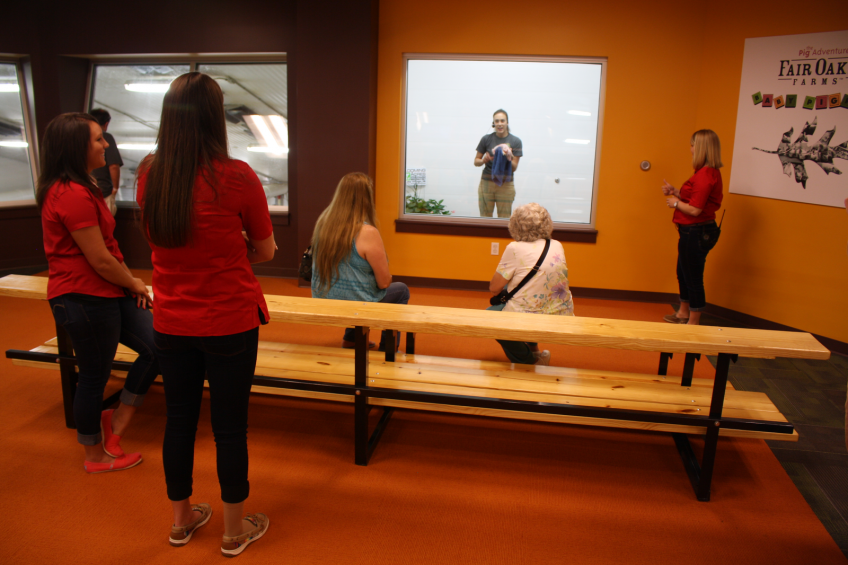
In the US, awareness is growing that successful welfarist ?campaigns are related to people being poorly informed about pig farming. Therefore, Indiana’s Fair Oaks Farms developed a ?Pig Adventure. It’s agritourism, literally on top of a new ?breeding facility.
“How much milk do piglets drink per day?” Two women on a wooden bench peek through a glass window, behind which pig caretaker Brittany shows a just-born baby piglet. “That really depends,” she replies. In the beginning it may be as much as only one cup a day, but in the days before the piglet is weaned it goes up to two cups.”
Brittany looks at the piglet and asks, “Any more questions?” The women briefly exchange a quick look and shake their heads. Angela removes the portable microphone from her head, thanks her audience and disappears through a door behind her, still carrying the newborn piglet.
It is a common ritual at Fair Oaks Farms. Every half an hour, one of the farrowing barn employees comes up to this so-called Pig Window, showing visitors from up close what a newborn piglet looks like and to be there first-hand to answer any questions. All with a biosecurity window between them.
Welcome to Fair Oaks Farms’ Pig Adventure – likely one of the very few swine farms in the US that actively promotes visitors to come and see them. Quite frankly, it’s hard to miss, as large-scale advertising along the Interstate 65 running between Chicago to Indianapolis continuously appeals to travellers’ curiosity. The brand new multimillion dollar farm complex was purpose-built to have this double function. On one hand it’s a conventional modern commercial farrow-to-wean facility, on the other it is a great educational day out for the whole family.
Fair Oaks Pig Adventure, Indiana, USA
- Farm type: Breed-to-weaning farm
- Number of sows: 2,800
- Output: 80,000 weaned piglets/ year
- Weaning: 21 days
- Piglets/ sow/ litter: 14
- Piglets weaned/ sow/ year: 31
- Staff: 10 (Pig Adventure – visitors); 15-17 (Legacy Farms – pigs)
Philosophy
The Pig Adventure’s double strategy is probably best explained by Laken Dahnke, the farm’s farrowing manager. She says, “Nowadays, people are two or three generations removed from a farm. It is very important for people to know where their food comes from and the different processes that have to do with getting a pig to the market and that food to the plate. Also, nowadays, there are all kinds of different animal rights groups, that are making their own videos. This is our chance to show what really does go on, letting people see that those videos aren’t all true.”
To make both ends come together, a lot more was needed than just opening the doors to the general public – careful planning and substantial investments have been part of the project from the start. Sarah Hoek, assistant manager, and responsibly for welcoming visitors, speaks of an ‘upstairs’ and a ‘downstairs’, both of them being strictly separated.
‘Downstairs’ is where the pigs are, she says, spread out in three barns. One is for young gilts who need to grow to become ready for their first gestation; the second is for gestating sows and the third is for farrowing, with one section for just-weaned piglets.
‘Upstairs’, this is where the visitors come in – their area consists of a Visitor Center, full of modern museum-like exhibits, information panels, games to be played and many corridors with viewing windows to look on the pigs down below.
Only a vague hint of pig presence can be smelled in the upstairs area – the result of a stringent separation of the zones. Hoek says, “For biosecurity reasons, upstairs, a zone of negative pressure is created. This causes air to flow from below up and not the other way round. This way we can be fairly sure no PED or other viruses will enter the pig zone.”
From above, visitors can admire the day-to-day hustle and bustle of a pig farm. Hoek says, “We just want to be completely transparent. There’s virtually nothing people can’t see – the only place that cannot be seen is the corridor right below where they stand. The only things performed outside of the public’s view are castration and tail docking. But we do inform everyone about it, we don’t hide it.”
The adventure ‘upstairs’
On arrival, most references found are in black and white and point to a moooving experience – Fair Oaks Farms’ Dairy Adventure, which has been in existence for about ten years. Read more about this in the box below. Once visitors have hopped onto the special Pig Bus, they are taken to the pig facility, about a two mile journey through the fields.
From the outside, nothing reveals the special purpose of the farm building. Once the bus approaches however, a bus-sized gate opens and the bus parks inside. After warm words of welcome by staff members, guests pour out into the Visitor Center and find themselves eye to eye with colourful holograms, computer games, video presentations, history walls and even a projected ‘shower’ on the way to the farm buildings – in short, a modern museum environment for all ages.
A special bureau was hired to cooperate with Fair Oaks Farms to design the museum side of the farm, explains Hoek. Colour patterns help visitors discern between the ‘growing’, ‘gestating’ and ‘birthing’ sections of the farm – more about this below.
The farm ‘downstairs’
Visitors usually start with the grower section, then visit the gestation barns and end in the farrowing barns. Each of the corridors in the buildings are decorated with informative and interactive panels about the farms’ inhabitants, their feed, life, management and caretakers.
Growing
The gilt section consists of six rooms – two nurseries for younger gilts and four for older gilts. The gilts get their first round of insemination when they are six to seven months old. They are fed on a diet of soybean meal, corn and a mixture of minerals. The gilts are PIC 1070 – a crossbreed of Landrace, Large White and a bit Duroc. Two Meishan boars, which help in detecting the moments the gilts come into heat,
complete the rooms with older gilts.
Gestating
Without any doubt the most spectacular of the three barns, the gestation zone houses 2,400 sows. About 200 of them are kept in stalls for the first five days to seven after insemination. Semen used comes from PIC 394 boars, consisting of Yorkshire, Hampshire and Duroc genetics.
Once gestation is confirmed, the sows are released in both static and dynamic groups with Electronic Sow Feeding (ESF) – a concept gradually making way in the US swine industry. In total 22 ESF stations by Schauer are applied to feed all the sows. Feeding rations are different depending on the stage of gestation.
Farrowing (Birthing)
In ten immaculately clean rooms with 48 farrowing crates each, the piglets are born and tended to. The piglets are being weaned around 21 days and
collected in the eighth compartment – this section being a favourite among young visitors. The piglets stay here until a truck brings the piglets for further growing and finishing in farms in Ohio, Indiana or Illinois. It is in this Birthing sector, where the Pig Window can be found, described in the first
paragraphs.
Staff
Animal husbandry at Fair Oaks Farms is not the same as working on a conventional farm, Dahnke explains. “We can have a 1,000 plus people here visiting the farm – all those sets of eyes are watching you on a daily basis. They are watching you, if you are taking care of the pigs and tending to them, especially while they’re farrowing,” she says, having worked on a conventional pig farm as well.
She also points to the big perspective difference – visitors may not understand what they see, may lack contextual knowledge or simply may not have heard of certain jargon before. Dahnke points to sow stalls as an example, saying, “A lot of people have had the impression that sows can’t get up. These sows are free to get up as many times as they want! And on any given day they are free to move as they want, they’re not held down.”

Laken Dahnke, farrowing manager at the Fair Oaks Farms Pig Adventure.
A wide variety of questions usually is fired at them. Dahnke explains, “Common questions are about the colour. Others include, ‘Are their eyes open when they’re born? Are they born with teeth? How big are they when they are born? And then how big are they when they are fully grown? How much do the sows weigh? What do they eat?'”
She smiles and adds: “Something we always have to be sensitive to, is our terminology. The average person doesn’t know that a ‘sow’ is just our term for a ‘mum’. And that ‘gilt’ is a term for a female pig that has not yet had a litter. And that we have to be sensitive to because we have to use terminology that they will understand, otherwise they are not really going to be learning while they are here with us.”
Future
At the moment, the Pig Adventure ends with the piglets being weaned. Educating visitors, however, will not be fully complete until next year, when the Pork Education Center will also be opened. This addition, to be built at the Fair Oaks Farms campus, will tell visitors what cannot be seen at the farm. In the words of Sarah Hoek: “We want to show how amazing a pig is, and what you can do with pork.” This addition is scheduled to be opened in spring 2015.

Sarah Hoek, assistant manager at the Fair Oaks Farms Pig Adventure
The Pig Adventure: A joint-venture
Fair Oaks Farms has already been in existence for a decade as a dairy operation, aimed at inviting members of the public to have a great day out. Receiving over 200,000 visitors a year, the farm is set up around tourists being trucked through the dairy operation, thus allowing visitors to see one-on-one what happens on a dairy farm on a daily basis. It includes milking robots, a birthing barn and a restaurant. When the Pig Adventure was planned as an addition, the strategy had to be slightly amended. Access is possible on foot, with two different companies being involved for the exploitation. Fair Oaks Farms itself is taking care of the ‘upstairs’ (tourism) part. Belstra Milling, an independent feed manufacturing company, headquartered in DeMotte, IN, takes care of the ‘downstairs’ (pig) business. Belstra Milling is also the owner of a pork production division, on six locations. For the cooperation with Fair Oaks, ‘Legacy Farms’ was set up. The initiative gets support from the Indiana Pork Board and the US National Pork Board.
Join 18,000+ subscribers
Subscribe to our newsletter to stay updated about all the need-to-know content in the pigsector, three times a week. Beheer
Beheer







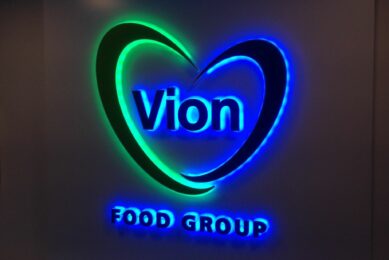
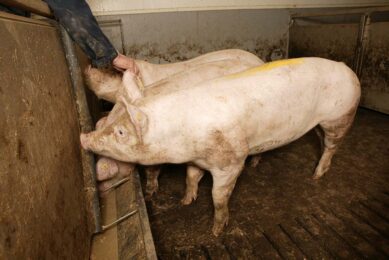
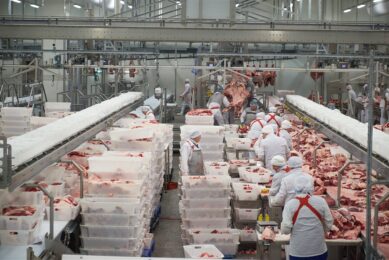
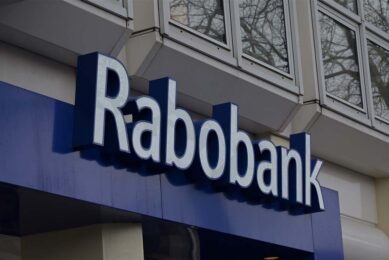





 WP Admin
WP Admin  Bewerk bericht
Bewerk bericht